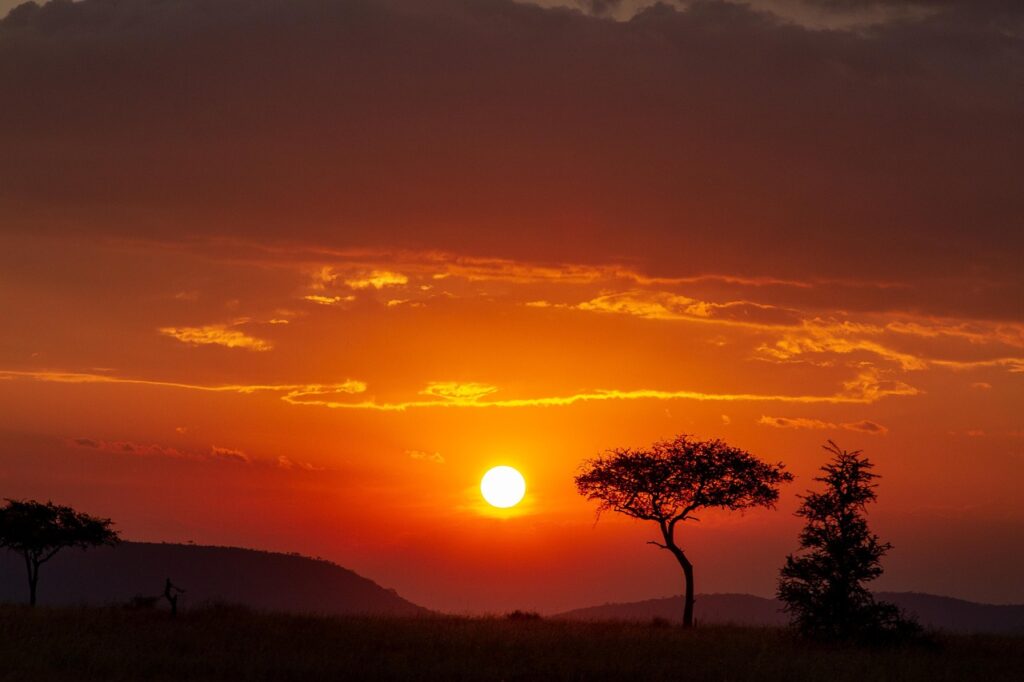
Planning a safari in Africa can be like navigating a vast wilderness. Most likely, the reason you’re here is your desire for a well-defined, painstakingly planned itinerary that will turn your vision into a real journey through East Africa’s stunning scenery. This thorough guide offers a well-thought-out 7-day Tanzania safari itinerary that is easy to understand and gives you the confidence to make wise choices for an experience that will only come around once in a lifetime. Every day and important factors will be broken down in an easy-to-read, point-by-point manner.
Key Considerations for Your Safari Itinerary: Essential Steps for Planning
1. Selecting a Trustworthy Tour Operator: Your Adventure Companion
2. Essentials of Packing: Getting Ready for the African Environment
3. Adopting Ethical Wildlife Tourism: Conscientious Travel
4. Personalizing Your Journey: Crafting Your Ideal Safari
5. Knowing When to Go: Syncing Your Schedule with the Cycles of Nature
Making the Most of Your Safari: Tips for an Unforgettable Experience
Your 7-Day Tanzania Safari Itinerary at a Glance:
This itinerary gives you a brief but comprehensive rundown of the amazing journey that lies ahead of you:
Day 1: Meet your guide at Kilimanjaro International Airport (JRO), then proceed to Arusha for an important pre-safari briefing and overnight stay.
Day 2: Set out on your first game drive in Tarangire National Park, which is well-known for its sizable elephant populations and wide variety of other fauna.
Day 3: Discover Lake Manyara National Park’s distinctive ecosystems while looking for its renowned tree-climbing lions and a wide variety of birds.
Day 4: Take in the stunning descent into the Ngorongoro Crater, a natural wonder that is home to an astounding array of wildlife.
Day 5: Travel to the renowned Serengeti National Park, where you can experience its expansive plains and the recognizable predators that call them home.
Day 6: Spend the entire day on immersive game drives in the Serengeti, where you may see the Great Migration (seasonal) and possibly partake in cultural activities.
Day 7: Make the most of your last early-morning game drive in the Serengeti before starting your trip back to Arusha or the airport for your departure.
Day 1: Arrival in Arusha – Setting the Stage for Your Adventure:
A representative from your carefully chosen tour operator will greet you with traditional Tanzanian hospitality when you arrive at Kilimanjaro International Airport (JRO).
Enjoy a smooth and relaxing transfer to your reserved lodging in the energetic city of Arusha, which is frequently referred to as the entry point to the safari circuit in Northern Tanzania.
After checking into your hotel or lodge, spend the afternoon unwinding and getting used to the African climate and time zone. Think about taking a leisurely walk around the hotel’s grounds or maybe taking a cool plunge in the pool.
For a first introduction to Tanzanian culture and crafts, if you have the time and are feeling daring, you might think about taking a quick, guided tour of Arusha’s local marketplaces.
Your experienced tour operator conducts a vital pre-safari briefing at the end of the evening. To make sure you feel secure and ready for the journey ahead, this in-depth session will go over all the important aspects of your itinerary, such as daily schedules, park information, safety precautions, and the answers to any last-minute queries you may have.
Day 2: Tarangire National Park – Immersing Yourself in Elephant Country:
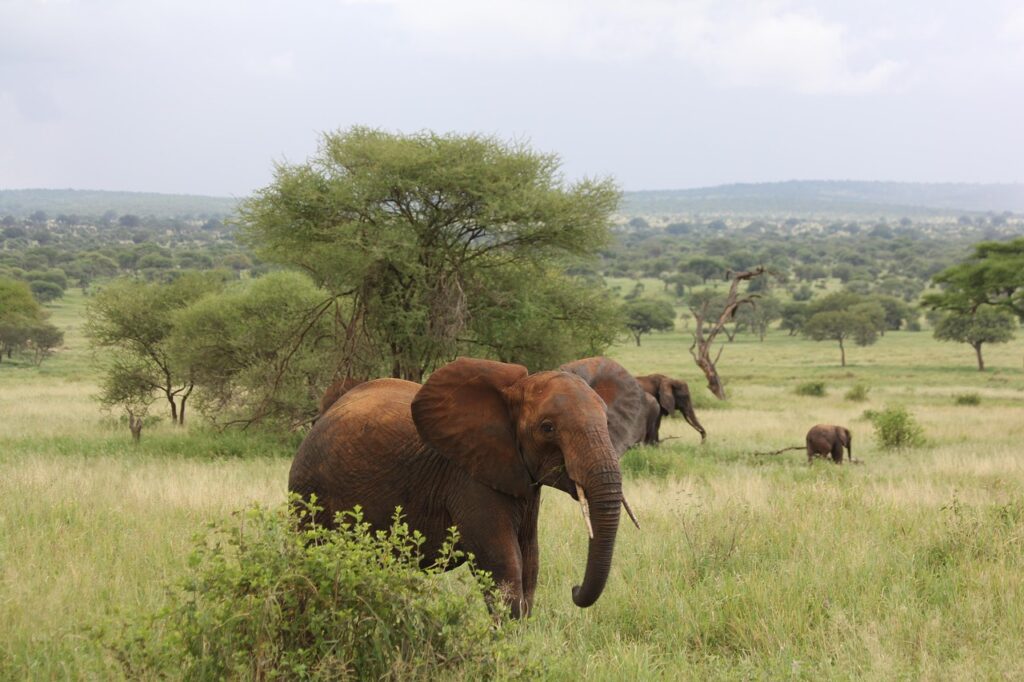
Following a filling and stimulating breakfast at your lodging in Arusha, you will take a picturesque drive to the enthralling Tarangire National Park.
Especially during the dry season (roughly June to October), when they gather along the Tarangire River, Tarangire is known for its enormous herds of elephants, which can number in the hundreds. These sightings are truly breathtaking.
Your day will consist of professionally led game drives in a cozy, open-roof safari car that offers the best possible viewing and photo ops.
A wide variety of antelope species, such as the majestic greater kudu with its spiraled horns and the imposing eland, the largest of all antelopes, can be seen grazing peacefully on the plains, as well as the graceful movements of giraffes reaching for acacia leaves.
Tarangire is home to hundreds of species of birds, ranging from majestic eagles to colorful rollers, making it an impressive place for those who enjoy avian wonders.
A delectable picnic lunch will be served at a well-selected picturesque location in the park, where you can enjoy your meal while taking in the sights and sounds of the African countryside.
You will travel to your carefully chosen lodging, which is located close to or inside Tarangire National Park, as the day turns into evening. There, you can relax and enjoy the day’s amazing wildlife encounters under the starry African sky.
Day 3: Lake Manyara National Park – Unveiling Diverse Habitats and Unique Wildlife:
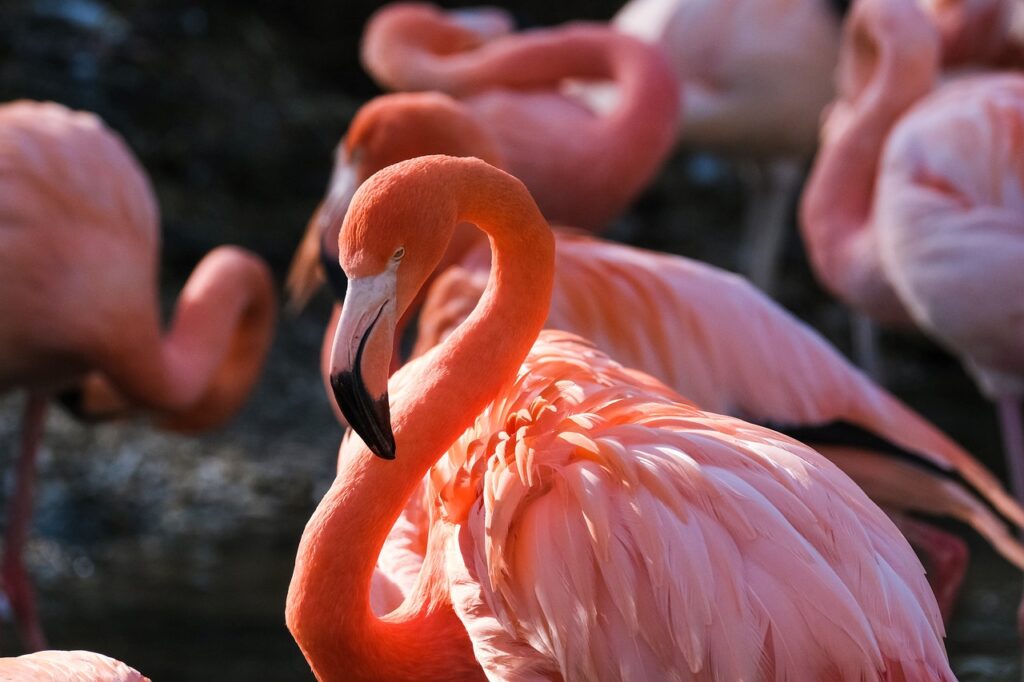
After a hearty breakfast, your itinerary leads you to the charming Lake Manyara National Park, a smaller but incredibly varied treasure tucked away at the base of the striking Great Rift Valley escarpment.
With its shimmering, shallow alkaline lake that draws large flocks of flamingos, dense groundwater forests teeming with primates, and intriguing geothermal hot springs that hint at the volcanic activity beneath, this park provides an intriguing contrast to Tarangire’s open plains.
The elusive tree-climbing lions of Lake Manyara are particularly well-known for a behavior that is uncommon elsewhere. Even though sightings are somewhat dependent on luck, the prospect makes your game drives more exciting.
In addition to lions, you can anticipate seeing vast herds of baboons going about their daily lives, a diverse array of birds, the magnificent sight of hippos soaking in muddy pools, and antelope species that have adapted to the park’s diverse habitats, including the sly bushbuck and the nimble Kirk’s dik-dik.
Your game drives will have a breathtaking and frequently dramatic backdrop thanks to Lake Manyara’s rich and varied vegetation, which also offers fantastic photo opportunities.
The opportunity to visit a local Maasai or other tribal village near the lake may be an enriching experience that offers valuable insights into the cultural heritage and traditions of the Tanzanian people, depending on your particular itinerary and the offerings of your tour operator.
As the afternoon draws to a close, you will leave Lake Manyara and travel to the renowned Ngorongoro Conservation Area, where you will check into your carefully selected lodge or tented camp that is either tucked away in the surrounding highlands or perched dramatically on the rim of the crater and offers stunning panoramic views of the surrounding area.
Day 4: The Majestic Ngorongoro Crater – Descending into a Natural Wildlife Spectacle:
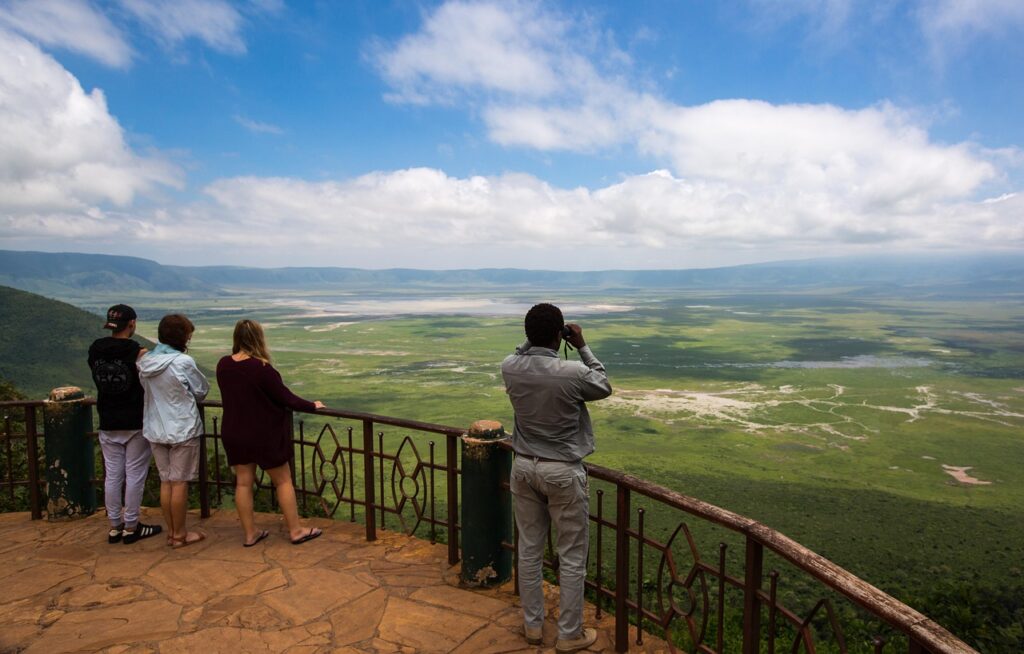
Today is devoted to a breathtaking tour of the magnificent Ngorongoro Crater, which is frequently referred to as the “Eighth Wonder of the Natural World” and is a UNESCO World Heritage Site. A remnant of an ancient volcano that collapsed, this enormous, self-contained caldera is a highlight of any African safari itinerary because it is home to an exceptionally dense concentration of wildlife.
Following an early start, your knowledgeable guide will skillfully drive a sturdy and dependable 4×4 safari vehicle as you embark on the exhilarating descent into the very center of the crater floor.
Awe-inspiring panoramic views of the entire caldera, which stretches out below like a lost world teeming with life, are revealed during the drive down into the crater itself.
The sheer number and closeness of the wildlife will astound you once you enter this natural amphitheater. The remarkable biodiversity found in this geological wonder is demonstrated by the fact that, with a little luck and the astute observation of your guide, it is not unusual to see all five of the renowned “Big Five”—lion, leopard, elephant, rhino, and buffalo—in a single, thrilling day.
Numerous other intriguing species, such as herds of zebras and wildebeests, elegant gazelles, and a range of predators like hyenas and jackals, find perfect homes in the open grasslands and sporadic acacia woodlands of the crater floor.
Your experienced guide will navigate the crater floor with skill, showing you the best places to see wildlife and sharing their deep knowledge of the crater’s distinct ecosystem and how its inhabitants are interconnected.
Enjoy a delightful and unforgettable picnic lunch by a hippo-filled pool or another picturesque location inside the crater, providing a rare chance to see these amazing animals in their natural habitat.
Your senses will be flooded with amazing memories and your camera will be overflowing with stunning photos of this genuinely remarkable day on your itinerary as you ascend back to the crater rim or your luxuriously furnished lodge as the late afternoon light starts to fade and cast a golden glow across the crater.
Day 5: Serengeti National Park – Journeying Across the Iconic Endless Plains:
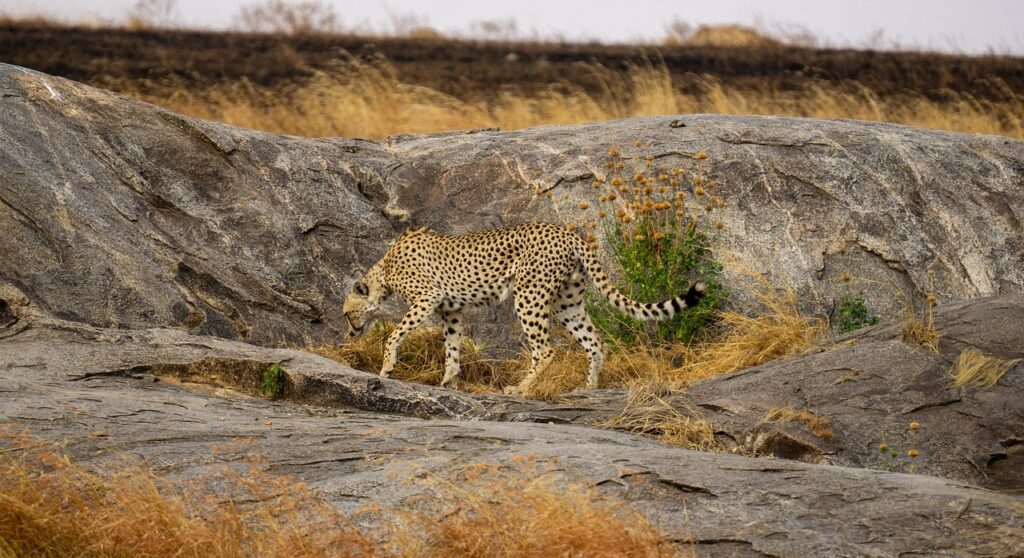
The renowned Serengeti National Park, perhaps the most renowned wildlife sanctuary on the whole African continent, is the next stop on your itinerary.
In addition to being the main location for the breathtaking Great Migration, the Serengeti is well known for its seemingly endless plains that stretch as far as the eye can see. Planning your itinerary carefully is key to experiencing its wonders.
Your trip to the Serengeti may entail the following, depending on your preferences and logistical considerations, all factors that shape your overall itinerary:
o A scenic flight: Provides amazing aerial views of the expansive terrain, enabling you to recognize the ecosystem’s immense size. o A more engaging overland drive: Enables you to observe the subtle changes in the African landscape and possibly see wildlife while traveling, another aspect to consider in your itinerary.
When you first arrive in the Serengeti, you will be astounded by the park’s immense size: an endless stretch of grasslands interspersed with kopjes (rocky outcrops) and acacia trees. Your first thrilling game drive on these famous plains will take up your afternoon, giving you a first taste of the distinctive character of the Serengeti, a highlight of this part of the itinerary.
Watch out for:
Magnificent lions, which are frequently spotted lounging in the shade of acacia trees or scouting their area from a kopje.
The swift elegance of cheetahs as they search the horizon for possible prey.
The elusive beauty of leopards, whether they are silently stalking through the tall grass or elegantly draped across tree branches.
Hyenas are frequently observed hunting or scavenging in clans.
Particularly in the golden light of the African mornings and evenings, the Serengeti’s immense size and profusion of wildlife provide unmatched photographic opportunities. To make the most of these opportunities, ensure your daily itinerary allows for ample time during these periods.
In order to fully experience the sounds and ambiance of the African bush, you will spend the night in a carefully selected lodge or tented camp tucked away in the Serengeti. Day 6: Immersive Serengeti Exploration – Delving Deeper into the Wild Heart of Africa: Your itinerary for today includes a visit to the renowned Serengeti National Park, which is known for its seemingly endless plains and the famous Great Migration. It is arguably the most acclaimed wildlife sanctuary on the entire African continent.
Your journey to the Serengeti may include a scenic flight from the Ngorongoro area, which offers mesmerizing aerial views of the vast and sprawling landscape, or a more immersive overland drive, which allows you to observe the subtle changes in the African terrain, depending on your preferences and logistical considerations.
When you first arrive in the Serengeti, you will be astounded by the park’s immense size: an apparently endless field of grasslands that stretches for miles. Immersion game drives deep into the Serengeti will take up your entire day. These drives will be expertly guided to increase your chances of seeing the park’s amazing variety of wildlife.
Observe the elusive beauty of leopards as they silently stalk through the tall grass or drape gracefully across tree branches, the majestic lions that are frequently spotted lounging in the shade of acacia trees, and the cheetahs’ lightning-fast grace as they scan the horizon.
Millions of zebras and wildebeests travel across the plains every year in search of new grazing, and depending on the season, you may have the unique chance to see the breathtaking spectacle of the Great Migration.
Consider the possibility of an optional hot air balloon safari at sunrise for a genuinely remarkable experience. This opulent addition to many itineraries offers a stunning panoramic view of the Serengeti awakening below.”
Alternatively, a visit to a traditional Maasai village close to the Serengeti could be part of your carefully planned itinerary, offering a worthwhile cultural exchange and a chance to discover the traditions and customs of these famous people.
At the end of the day, you will head back to your cozy lodge or tented camp, which is surrounded by the Serengeti, where you will be lulled to sleep by the sounds of the African night.
Day 7: Farewell Africa – Departure and Reflecting on Cherished Memories:
You will start your journey home after a final, heart-wrenching early morning game drive in the Serengeti, where you can take in the final, priceless moments of the African wilderness.
The logistics of your itinerary and the details of your flight schedule will determine whether you take a direct flight to Kilimanjaro International Airport for your next international departure or a convenient domestic flight from one of the Serengeti’s well-maintained airstrips back to the well-known hub of Arusha.
As an alternative, your well-thought-out itinerary might include a slower but no less fascinating overland drive back to Arusha, providing last, lingering views of the alluring Tanzanian countryside and the lively local life along the way.
The excitement of up-close encounters with amazing wildlife, the breathtaking beauty of the African landscapes, and the genuine warmth of the Tanzanian people you have met are just a few of the unforgettable memories you will take with you as you head to the airport and get ready to leave.
This well-planned seven-day itinerary offers an amazing and thorough introduction to the wonders of an African safari, leaving you with a profound respect for this remarkable continent and surely inspiring a desire for more explorations of its many other wonders.
Key Considerations for Your Safari Itinerary: Essential Steps for Planning:
1. Selecting a Trustworthy Tour Operator: Your Adventure Companion:
- Thorough Research: To determine the operator’s dependability and level of service, set aside time to conduct research and read internet reviews and testimonies from prior passengers.
- Local Expertise: Give preference to operators who have extensive local knowledge, seasoned guides who are familiar with the nuances of the parks and animal behavior, and solid local connections.
- Sustainable and Ethical Practices: Ask about the operator’s support for local communities, conservation initiatives, and dedication to responsible tourism.
- Customization Options: Verify that the operator can modify the itinerary to fit your time constraints, budget, and interests.
- Safety and Comfort: Check their track record for safety, the caliber of their cars, and the coziness of their lodging.
2. Essential Packing Items: Preparing for the African Environment:
- Clothes: Bring breathable, light clothing that can be layered for different temperatures. Neutral colors like olive green, beige, and khaki are ideal. Wear long sleeves and trousers to protect yourself from insects.
- Footwear: Sandals and comfortable, supportive walking shoes are necessary for unwinding at your lodging.
- Sun Protection: It’s essential to wear a wide-brimmed hat, high-quality sunglasses that block UV rays, and sunscreen with a high SPF.
- Insect Repellent: Select a potent repellent that contains DEET or another potent component.
- Binoculars: Your experience watching wildlife will be greatly improved by a quality pair of binoculars.
- Camera Equipment: To record the amazing sights, pack a camera with enough memory cards and extra batteries. For taking pictures of wildlife, think about using a zoom lens.
- Other necessities include a reusable water bottle, a power adapter, a dust scarf or bandana, a basic first-aid kit, and any personal medications..
3. Adopting Ethical Wildlife Tourism: Conscientious Travel:Respect Wildlife: Never try to feed or engage with any animal, and keep a safe and considerate distance from them.
- Support Conservation: Select travel agencies and lodging establishments that make a concerted effort to protect wildlife and foster community growth.
- Avoid Illegal Souvenirs: Avoid buying any goods derived from illegal wildlife trade or endangered species.
- Respect Local Cultures: Always get permission before taking pictures of people, dress respectfully, and be aware of local customs.
- Reduce Environmental Impact: Throughout your itinerary, choose eco-friendly options whenever you can, refrain from littering, and use less energy and water.
4. Personalizing Your Journey: Crafting Your Ideal Safari:
- Wildlife Interests: Let your operator know about your particular interests, such as the Great Migration, birdwatching, or seeing particular animals.
- Travel Style: Select the pace of your trip and the type of lodging you want (luxury, mid-range, or budget).
- Time of Year: Talk about when to go based on your interests and the best times to see wildlife in the various parks on your itinerary.
- Budget: To make sure your itinerary fits your financial constraints, be open and honest about your budget.
- Physical Considerations: Let your operator know about any physical restrictions or activity preferences.
5. Knowing When to Go:
Because there is less vegetation and fewer animals gathering at water sources, the dry season (June to October) is generally regarded as the best time to see wildlife overall.
Green Season (November to May): Provides beautiful scenery, reduced crowds, great birdwatching, and frequently lower prices. Rain, however, may make some places less accessible. When choosing this option, take into account the particular parks on your itinerary.
Making the Most of Your Safari: Tips for an Unforgettable Experience:
Be patient: Seeing wildlife is not always guaranteed and frequently calls for patience and careful attention to detail during your safari. Savor the beauty of the surroundings and the search process, keeping in mind that your itinerary allows for dedicated wildlife viewing time.
Pay Attention to Your Guide: Your guide is an expert on the local wildlife, plants, and ecosystems during your safari adventure. Ask questions and listen to what they have to say, as their knowledge is key to maximizing your itinerary‘s potential.
Be Alert: Look for tracks and other indications of wildlife, listen for animal sounds, and scan the horizon throughout your safari experience. Understanding the daily schedule of your itinerary can help you anticipate prime wildlife viewing times.
Keep Quiet: Animals may be frightened away by loud noises. Talk quietly, especially when you’re on a game drive or seeing wildlife on your safari, ensuring you don’t disrupt the natural flow of your itinerary.
Embrace the Unexpected: Unplanned interactions frequently result in some of the most memorable safari experiences. Enjoy the spontaneity of the wild and keep an open mind, as even deviations from the planned itinerary can be rewarding.
Respect the Wildlife: Never attempt to approach, feed, or disturb the animals during your safari. Keep a safe distance from them and let them act as they naturally would.
Capture Memories Sensibly: Remember to witness the moment with your own eyes in addition to taking pictures and videos on your safari adventure. Steer clear of flash photography near animals.
Maintain Hydration: Throughout the day, especially when on a game drive, make sure to drink lots of water on your safari.
Be Ready for Early Starts: In order to optimize wildlife viewing during cooler hours, many game drives start early in the morning on safari trips.
Unwind and Savor: Give in to the African bush’s rhythm and relish each second of this amazing safari journey.
An excellent foundation for your African journey is provided by this 7-day Tanzania safari itinerary. You’ll be ready to see amazing wildlife in famous parks if you pick a reliable operator and pack carefully. Travel sensibly, enjoy the experience, and make lifelong memories. This itinerary serves as the foundation for an amazing journey through the heart of Africa.”
Follow me on Facebook: https://www.facebook.com/profile.php?id=61574792461434

